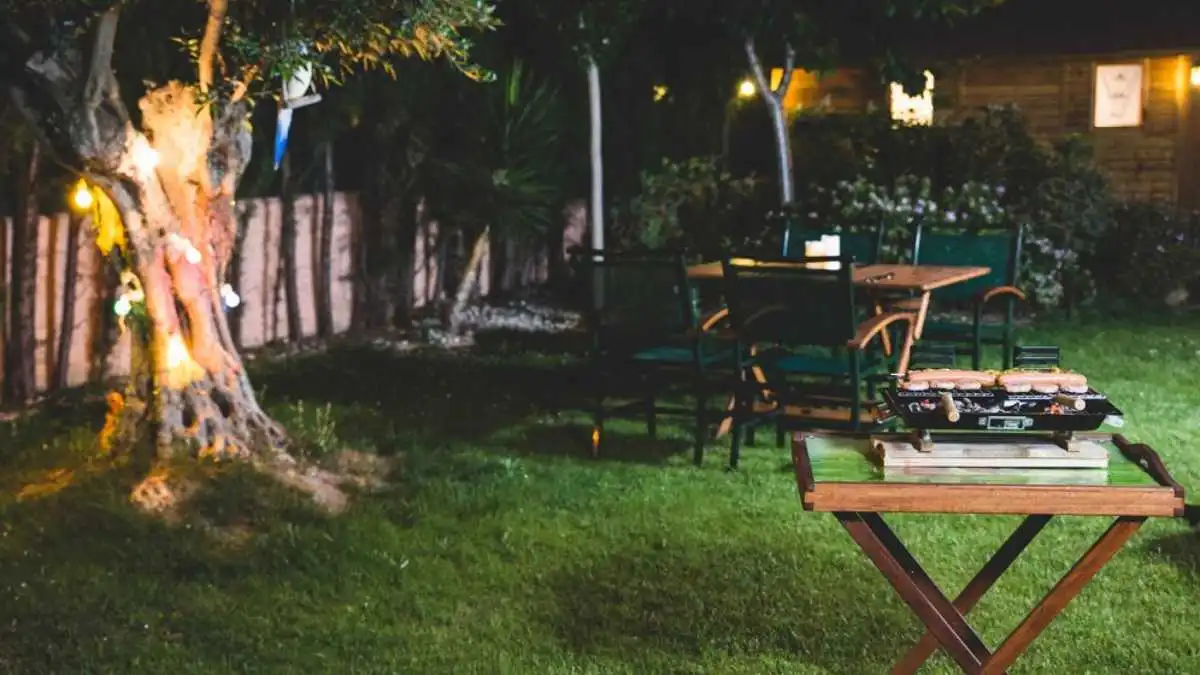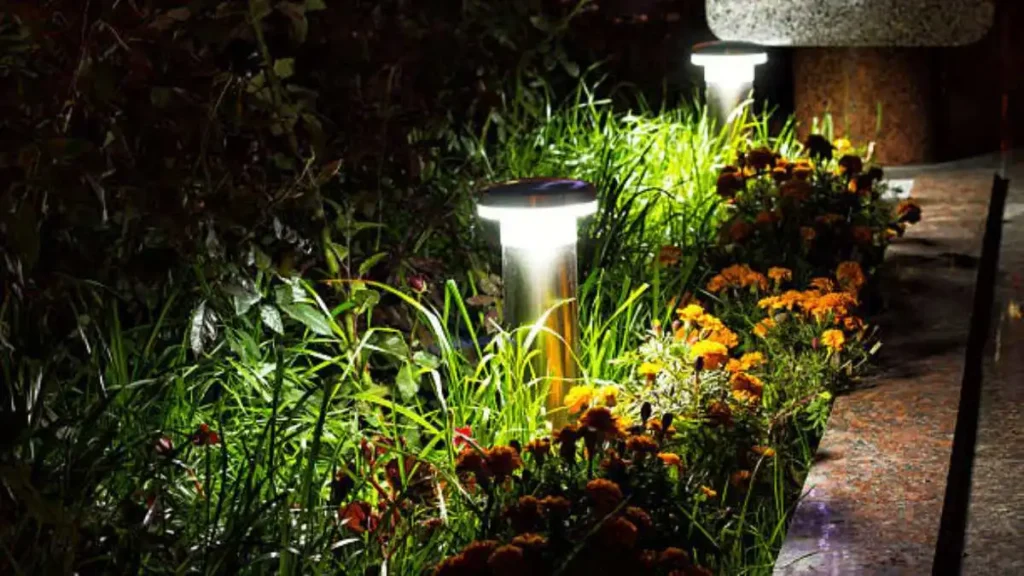GENERAL
The Art of Landscape Lighting: Creating Ambiance and Functionality

Landscape lighting is more than just illuminating outdoor spaces—it’s about creating an atmosphere that enhances the beauty of your property while improving safety and functionality. Thoughtfully placed lighting can transform gardens, walkways, patios, and architectural features, bringing them to life after sunset. Whether for aesthetics, security, or practical use, landscape lighting plays an essential role in maximizing the potential of outdoor spaces.
By combining different types of lighting, layering techniques, and focusing on key features, homeowners can create stunning outdoor environments that stand out at night. Working with professionals like Rockin’ M Outdoor Lighting ensures that your landscape lighting system is expertly designed and installed, bringing your outdoor vision to life.
In this article, we’ll explore the art of landscape lighting, the different types of lighting to consider, and how to use it to create a blend of ambiance and functionality in your outdoor areas.
Table of Contents
1. Understanding the Purpose of Landscape Lighting
Before planning a landscape lighting design, it’s important to identify its purpose. Different areas of your property may serve different functions, and the lighting should reflect that. Whether you want to highlight a particular feature, provide safety and security, or simply create an inviting ambiance, having a clear purpose helps guide the overall design.
Key Purposes of Landscape Lighting:
- Highlighting Architectural and Landscape Features: Lighting can accentuate the unique elements of your home and garden, such as trees, shrubs, sculptures, and fountains. By focusing light on these features, you draw attention to their beauty and create focal points that stand out, even at night.
- Creating Ambiance: Whether it’s a cozy backyard patio or an expansive garden, the right lighting sets the tone for the space. Soft, warm lighting can create a relaxed, intimate setting, while brighter, cooler lights might be more appropriate for areas designed for entertainment or activity.
- Improving Safety and Security: Properly illuminated paths, driveways, and entryways help ensure the safety of family members and guests by reducing the risk of accidents. Additionally, motion-sensor lights around entrances can act as a deterrent to intruders, making your property more secure.
By determining the primary purpose for your landscape lighting, you can tailor the design to enhance both the aesthetics and functionality of your outdoor spaces.
2. Types of Landscape Lighting to Consider
There are various types of landscape lighting that serve different functions, and understanding the options available will help you create a balanced lighting scheme. Combining different types of lighting adds depth and texture to your design, providing visual interest while ensuring that the space is functional after dark.
Common Types of Landscape Lighting:
- Path Lighting: Path lights are small fixtures placed along walkways, garden paths, or driveways to illuminate the ground. These lights improve visibility, guiding people safely through outdoor areas while adding a soft, welcoming glow to the landscape.
- Spotlights and Floodlights: Spotlights are used to focus light on specific features, such as trees, statues, or architectural details, while floodlights provide broader illumination over larger areas. These lights create dramatic effects and highlight the most important elements of your landscape.
- Up Lighting and Down Lighting: Up lighting involves placing lights at the base of a feature (like a tree or wall) and directing the light upwards to create a striking visual effect. Down lighting, on the other hand, places lights higher up, such as in trees or on walls, and shines light downwards, mimicking natural moonlight and creating a soft, subtle glow.
- Step Lighting: Step lights are built into stairways or decks to ensure safety while also adding to the aesthetic appeal of the space. These lights are ideal for areas with elevated terrain or multi-level designs where visibility is crucial.
- String Lights and Decorative Lighting: For a more whimsical or festive touch, string lights or decorative lanterns can be hung across patios, pergolas, or along fences. These types of lights are perfect for creating a relaxed, cozy atmosphere for outdoor gatherings or parties.
By combining different types of lighting, you can achieve a well-rounded lighting design that enhances both the beauty and functionality of your outdoor areas.
3. Enhancing Ambiance with Layered Lighting
One of the most effective techniques in landscape lighting design is layering. Just as you would layer lighting indoors—combining overhead, task, and accent lighting—outdoor spaces benefit from using multiple layers of light. This approach ensures that the landscape is well-lit while creating visual interest and ambiance.
How to Layer Landscape Lighting:
- Ambient Lighting: Ambient lighting provides general illumination for outdoor spaces. This might come from large floodlights, overhead lights, or wall-mounted sconces that cast light over larger areas, ensuring that the space is functional and safe.
- Accent Lighting: Accent lights are used to highlight specific features in your landscape, such as water features, statues, or flowering plants. These lights add depth and dimension, drawing the eye to focal points and enhancing the aesthetic appeal of the space.
- Task Lighting: Task lighting focuses on areas where specific activities take place, such as outdoor kitchens, dining areas, or pathways. This type of lighting ensures that these spaces are safe and functional, whether you’re preparing food, entertaining guests, or simply navigating the area at night.
Layering different types of lighting helps create a balanced and dynamic environment, offering both practical illumination and mood-enhancing effects.

4. Creating Focal Points with Lighting
One of the key elements of successful landscape lighting is the creation of focal points. These are areas or features that you want to draw attention to, and lighting is an excellent way to make them stand out. Whether it’s an impressive tree, a garden sculpture, or a water fountain, focusing light on these elements adds a sense of drama and elegance to your landscape.
Tips for Using Lighting to Highlight Focal Points:
- Use Spotlights for Dramatic Effects: Spotlights are ideal for creating focused beams of light that highlight specific features. For example, placing a spotlight at the base of a tree and directing it upwards will illuminate the branches and leaves, creating a striking effect against the night sky.
- Balance Light and Shadow: When highlighting focal points, it’s important to consider how the interplay between light and shadow will affect the overall look. By strategically placing lights, you can create contrast and depth, making the landscape appear more dynamic and visually interesting.
- Experiment with Angles: Don’t be afraid to experiment with the placement and angles of your lighting. For example, placing a light at the foot of a wall and angling it upwards can cast long shadows and create a dramatic silhouette of plants or architectural elements.
Creating focal points with landscape lighting helps guide the viewer’s eye through the space and emphasizes the most beautiful and unique aspects of your property.
5. Practical Considerations for Landscape Lighting
While landscape lighting is an artistic endeavor, there are also several practical considerations to keep in mind. Ensuring that your lighting is energy-efficient, weather-resistant, and properly installed will help you enjoy your outdoor spaces for years to come.
Practical Tips for Successful Landscape Lighting:
- Energy Efficiency: LED lights are the most energy-efficient option for landscape lighting. Not only do they use significantly less electricity than traditional incandescent bulbs, but they also have a longer lifespan, reducing the need for frequent replacements. Solar-powered lights are another energy-efficient option, especially for path lighting or garden accents.
- Durability and Weather Resistance: Outdoor lights must be able to withstand the elements, including rain, wind, and extreme temperatures. Look for fixtures made from durable, weather-resistant materials such as stainless steel or brass. Additionally, ensure that your lighting system is properly waterproofed to prevent electrical issues.
- Professional Installation: For larger or more complex lighting designs, it’s often best to work with a professional. Installing outdoor lighting systems involves wiring, electrical work, and strategic placement to achieve the best results. A professional can ensure that the lighting is installed safely and efficiently, while also helping you achieve the desired look.
By focusing on these practical considerations, you can create a landscape lighting system that is both beautiful and long-lasting.
6. The Importance of Maintenance for Landscape Lighting Systems
Once your landscape lighting is installed, regular maintenance is essential to ensure that the system continues to function properly and looks its best. Over time, outdoor lights can accumulate dirt, debris, and weather-related wear, so keeping up with maintenance ensures that your lights remain bright and effective.
Maintenance Tips for Outdoor Lighting:
- Clean the Fixtures: Dirt, dust, and leaves can accumulate on light fixtures, reducing their brightness and overall effectiveness. Regularly clean the lights and lenses to ensure they shine as intended.
- Check for Damage: Over time, bulbs may burn out or fixtures may become damaged due to weather or other factors. Regularly inspect your lighting system for any signs of wear and replace damaged parts as needed.
- Adjust the Lights: As plants grow and the landscape evolves, you may need to adjust the placement or angle of your lights to ensure they are illuminating the right areas. Regular adjustments keep your lighting system aligned with the current landscape design.
- Check Electrical Components: Periodically check the wiring and connections to ensure that everything is functioning correctly. Address any electrical issues immediately to prevent outages or other problems.
By keeping up with routine maintenance, you’ll ensure that your landscape lighting system continues to enhance the beauty and functionality of your outdoor spaces for years to come.
Conclusion
Landscape lighting is both an art and a science, blending beauty with practicality to create outdoor spaces that are inviting, functional, and safe. Whether you’re illuminating architectural features, creating a peaceful ambiance, or improving security, thoughtful lighting design enhances the overall appeal of your property.
-

 GENERAL4 months ago
GENERAL4 months agoChristofle – For Those Who Dream of Family Heirloom Silver
-

 SPORTS6 months ago
SPORTS6 months agoDiscover the World of Football with Streameast: Watch Your Favorite Leagues and Tournaments
-

 GENERAL2 months ago
GENERAL2 months agoUncovering the World of кинокрадко: The Dark Side of Film Piracy
-

 GENERAL1 month ago
GENERAL1 month agoUnveiling the Art of преводсч: How Translators Bridge Language Barriers



























